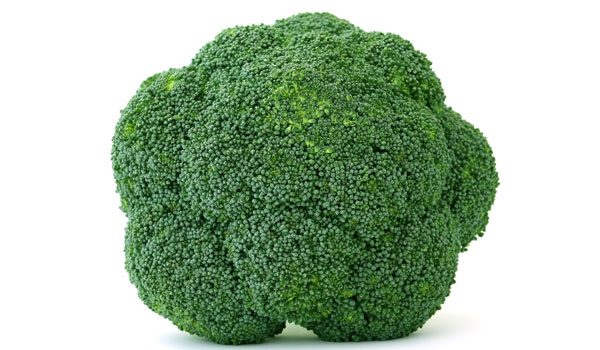
Broccoli is a vegetable that is fairly easy to grow and packs quite a nutritional punch. It is high in vitamin C and beta carotene, has a good dose of calcium and iron, and may even help guard against certain types of cancer. Plus, it is low in calories. Broccoli from your own garden tastes much sweeter and fresher than the broccoli normally found on the grocery store shelves.
Table of Contents:
Before You Plant
- Although broccoli will grow just about anywhere, keep in mind that broccoli prefers cool weather. While certain varieties of broccoli are more heat tolerant than others (i.e. Green Comet is considered the most heat tolerant by many), cooler temperatures (summertime average of 85 degrees or below) tend to give the broccoli a fuller, more robust flavor.
- Broccoli also prefers full sun, so make sure you keep that in mind when picking the perfect spot to plant your broccoli.
- Broccoli can be seeded in your garden as soon as the ground can be worked. To get a jump on things, start your seeds indoors about 3 to 4 weeks before the last frost. As soon as your garden soil can be worked for planting, you can transplant the seedlings. Since it is a cool weather vegetable, seedlings will not be harmed by spring frost.
Planting Broccoli
What You Will Need:
- Gardening mulch (amount depends on the size of your garden)
- Spade
- Rake
- Gardening trowel
- Broccoli seeds or seedlings
- Water
How to Plant:
- If you are planting your broccoli from a seed packet, read the instructions on the packet before planting. If any instructions on the packet contradict this article always follow the advice on the packet pertaining to your particular variety of broccoli.
- Generally, broccoli grows best in rich, well-worked soil. Mix the appropriate amount of gardening mulch (see the back of the bag for recommended amount) into the soil with the spade, removing any weeds as you do.
- Rake the soil, removing large rocks and leveling it out as you go.
- Plant seeds about 1/2 to 1 inch deep, 2-3 feet apart, covering with loose soil. Place a small stake next to the area where you planted the seeds so you will know where they are. When seeds sprout, thin to 15 inches between seedlings.
- If you are planting seedlings that have already been started, plant about 15 inches apart. Dig a small hole, about 2 inches deep, with your trowel.
- Gently but firmly grasp the seedling by the base of the stem and lift it out (dirt and all) from the starter container. Place the root base of the seedling (with dirt still around it) into the hole, making sure the root ball is completely within the hole. Add about 1 inch of water into the hole, and fill in with soil, patting firmly around the base of the seedling, tamping it securely into the ground.
- Keep the soil moist, but not saturated, during the growing season. Do not water the tops of the broccoli plants as this will encourage premature flowering.
- Fertilize your broccoli crop every 3 to 4 weeks with a general purpose fertilizer.
- Make sure to weed your garden, removing all weeds in the area of the broccoli. Not only will weeds inhibit growth, but they can encourage disease and pests.
- Once the seed has sprouted (or the seedling is placed in the ground), it can take anywhere from 55 to 100 days to reach maturity, depending upon the weather conditions and the variety of broccoli (the time to maturity should be indicated on the packet of seeds). Your first harvest should be a large, central head, which should be cut with 5 or 6 inches of stem, once the head is fully developed with tight green buds. If you wait too long, the buds will loosen and separate and small yellow flowers may start to appear; the broccoli is still edible, but will be rather bitter.
- Once you have harvested the central head, smaller side shoots will develop for future harvest. Again, harvest when the head is fully developed with tight green buds, cutting off the head with about 5 to 6 inches of stem.
- You can usually continue to harvest broccoli for several weeks, although the side shoots may become progressively smaller as time goes on.
Additional Tips and Ideas
- While broccoli is generally resistant to many diseases, it is susceptible to Club Root, a fungus carried by other plants. This is one of the reasons it is important to weed. It is also another good reason to start your seedlings rather than buy ones already started.
- Broccoli is extremely susceptible to certain insects, in particular, aphids and cabbage loopers (larva stage of a white moth). With regard to the loopers, as an alternative to insecticides, try placing a screen or insect netting over your plant so that the moth can’t get in to lay her eggs. With regard to aphids, instead of insecticide, try using a garlic spray (garlic and water).
- Once you’ve harvested your broccoli, store it unwashed in a loose or perforated plastic storage bag in your vegetable crisper. If you don’t refrigerate your broccoli, it will become fibrous and woody.
- Don’t store your cut broccoli in water, as it will loose its water soluble nutrients and become limp.
- Fresh broccoli should be refrigerated and used within 3 to 5 days of harvesting. If broccoli goes past that 5 day mark, it may look fine, but it will taste poorly and won’t pack the same nutritional punch.